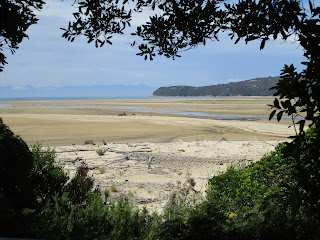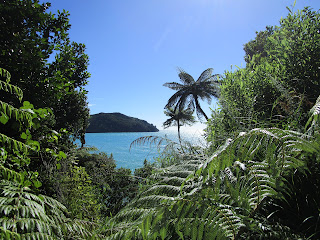Today's mail brought not one, but two copies of the Summer edition of the Canadian Quilter. The editorial staff at the Canadian Quilter kindly send out two copies of the publication any time that an article you've written appears in their pages. So I turned quickly through the pages, and sure enough, found what I was looking for - "A Legacy in Wool - the Quilts of Eleanora Laffin" - an article I'd submitted some months ago about this remarkable quilter from Hornby Island, BC. It was terrific to browse the magazine and see large photos of some of her incredible work spread over three pages of the magazine.
The thing is, that long before recycling was part of our everyday vocabulary, Eleanora was searching for wool at the Hornby Island Free Store, as well as other thrift stores, and washing it and working it into her quilts. She loves the richness of the colours of wool, with a depth with which cotton can't compete, she feels; and she works these into her unique quilts in an unending variety of ways. She's now completed 52 (or perhaps even more!) quilts, and I for one, think they're deserving of an exhibit of their own. Perhaps the organizers of Quilt Canada might even be persuaded to show them when their National Juried Show comes to Vancouver next year.
I first saw Eleanora's quilts at the Hornby Quilters outdoor quilt show in 2011, hanging under the apple trees. So rich! She's taken so many traditional quilt designs but worked them in wool with her own personal touch. When you see them, you know that no-one except Eleanora could have made them. More recent quilts are looser, more improvisational, but still with her signature style in evidence.
As well as creating these distinctive mostly wool quilts of her own, Eleanora has been the life blood of the Hornby Quilters for many, many years. I try to make it to their weekly gatherings as often as I can, and always wonder what I will find underway when I arrive. Sewing machines are brought out and cutting equipment and make-do design walls are set-up, and the business of making quilts for the community as well as helping one another with our own projects is soon underway. The afternoon ends with tea and goodies, and loose plans are made for what comes next. Being a part of it all, of the Hornby Quilters, has enriched my life enormously, and it's Eleanora who keeps us all organized and (somewhat) on track. So here's a toast to a remarkable woman, who I feel fortunate to call a friend - a quilter par excellence - with a heart of gold, and a creative spirit and freedom that are uniquely hers. To Eleanora!
































